Jira Service Management / Service Desk
Overview
The Jira Service Management connector enables your Leena AI Agents to integrate with your organization's Jira Service Management platform, facilitating automated service desk operations, request management, and workflow automation.
Jira Service Management is a service desk solution that enables IT, facilities, HR, legal, marketing, finance, and other teams to track, prioritize, and resolve requests from teammates and customers. The Jira Service Management connector allows Leena AI to automate service desk workflows, manage requests, and interact with service desks seamlessly.
API Details
Leena AI integrates with Jira Service Management via REST APIs.
Documentation link: Jira Service Management Cloud REST APIs
Setup
The Jira Service Management connector uses Basic API Key authentication.
Prerequisites
Before setting up the Jira Service Management connector, ensure you have:
- Administrator access to your Atlassian Account
- Access to Jira Service Management instance
- Ability to create API tokens in Atlassian
- Access to your Leena AI workspace with connector management permissions
Get credentials
Here is how to create an API token in Jira Service Management:
-
Log in to Atlassian Account
- Go to https://id.atlassian.com/manage-profile/security/api-tokens
- Sign in with your Atlassian account
- Alternatively, you can login to the dashboard, and navigate to Profile > Security > API Tokens to create an API token
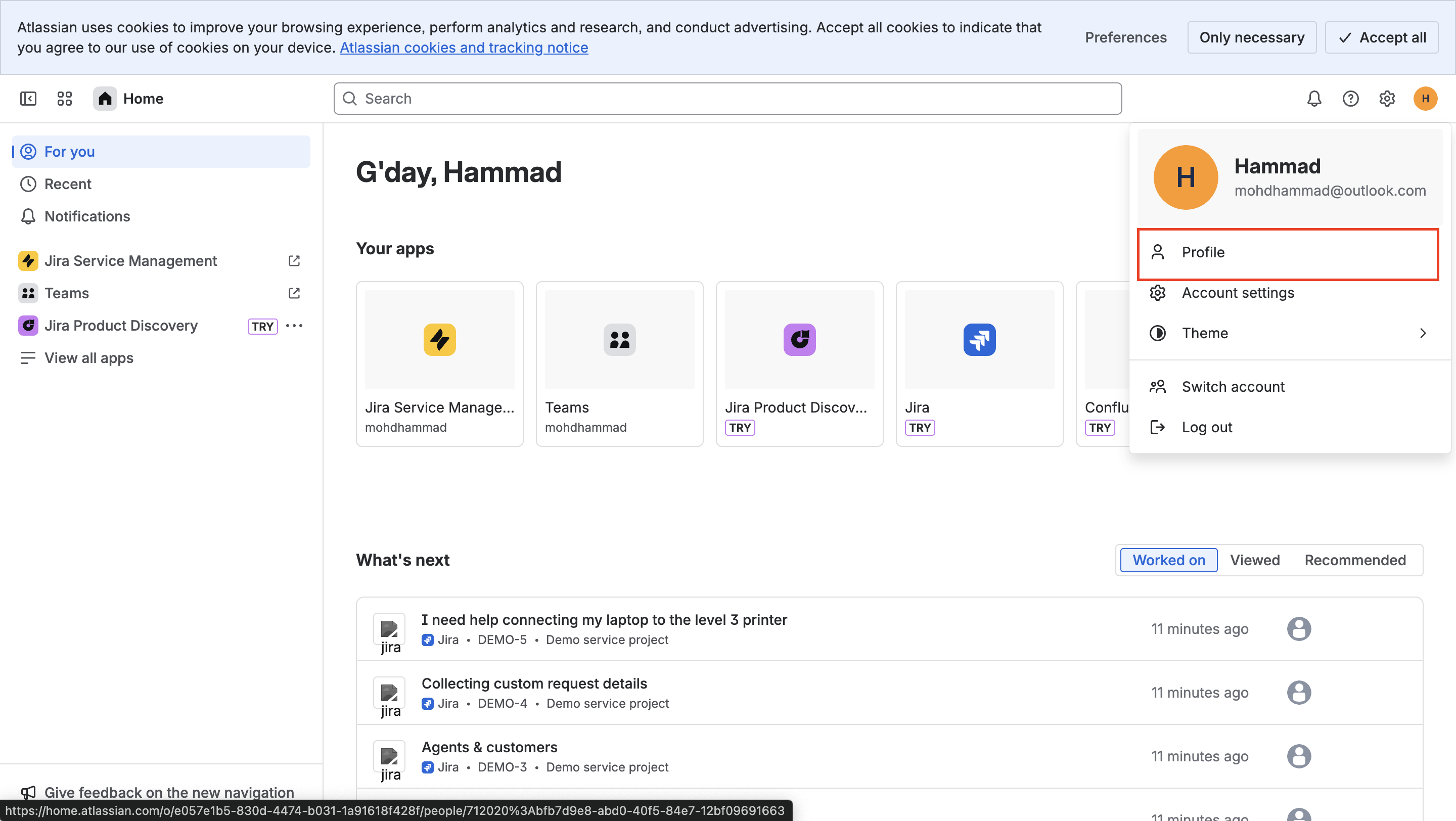
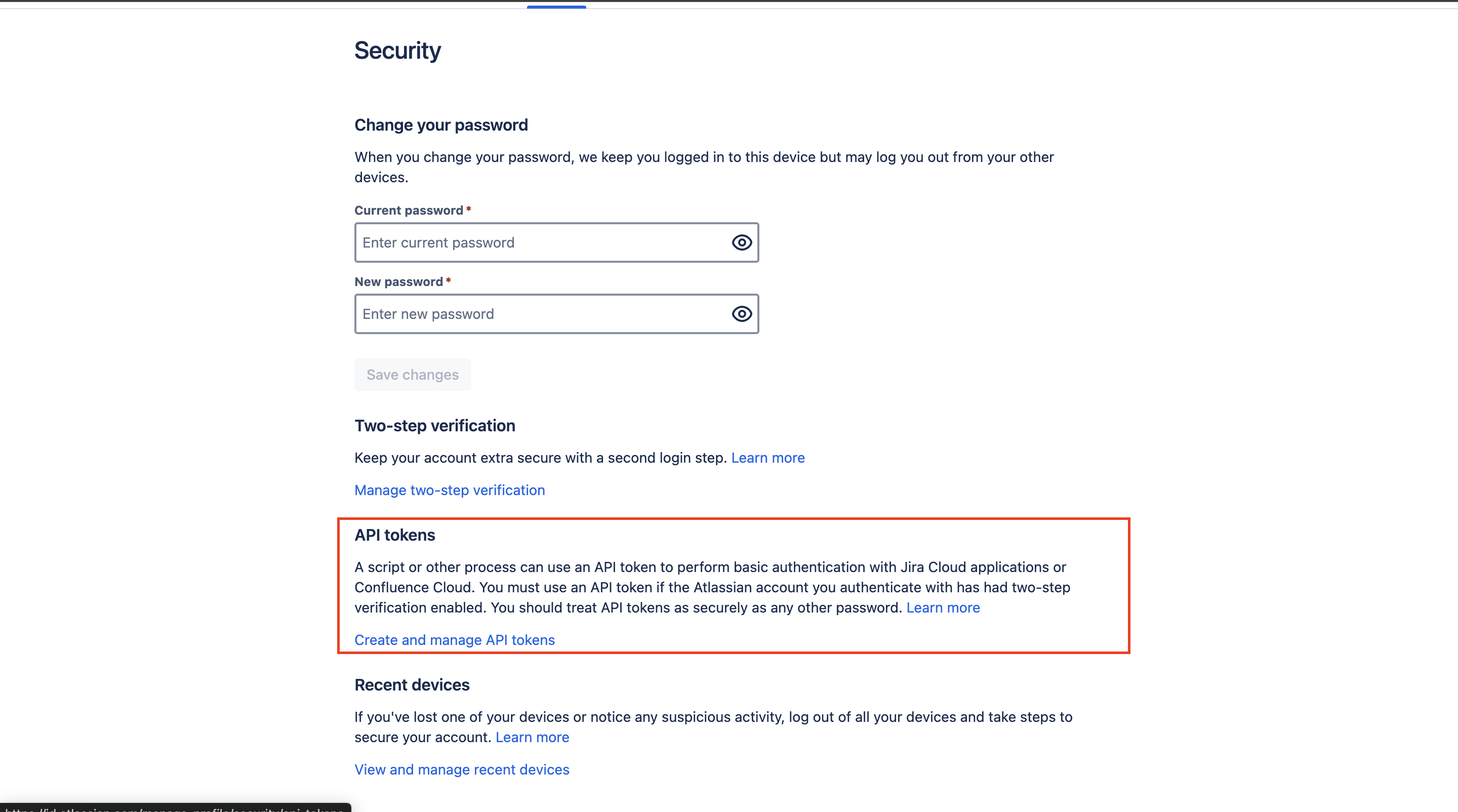

-
Create API Token
- Click Create API token
- You can also choose Create API token with scopes, if you wish to limit the access
- Enter a memorable and concise Label for your token along with the expiration date
- Define applications for which you need to create token for. Select Jira for Jira Service Management/Service Desk or Jira Cloud
- Select Scopes, in case you are generating a token with limited access
- Click Create
- Copy your token to a secure location
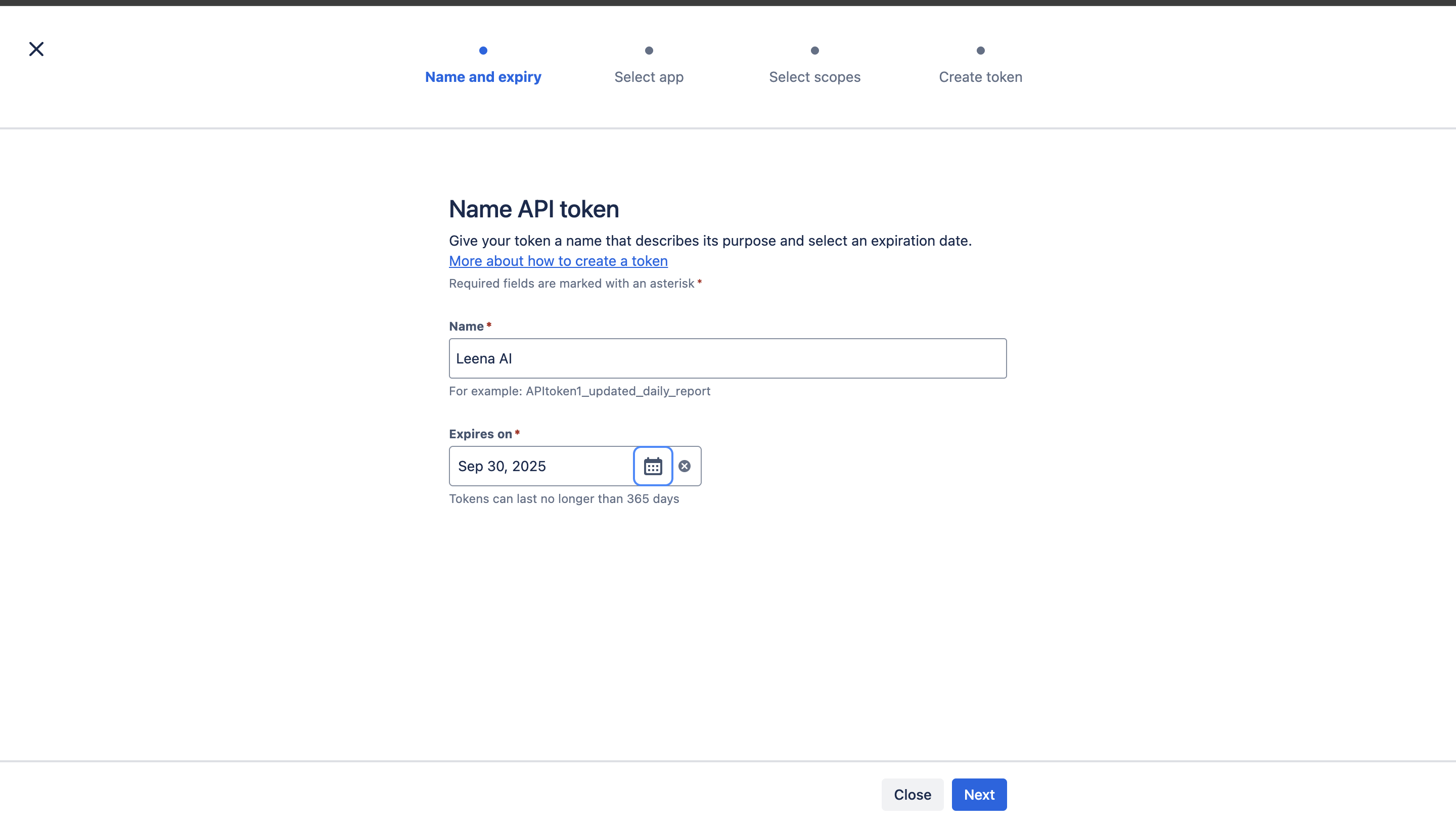
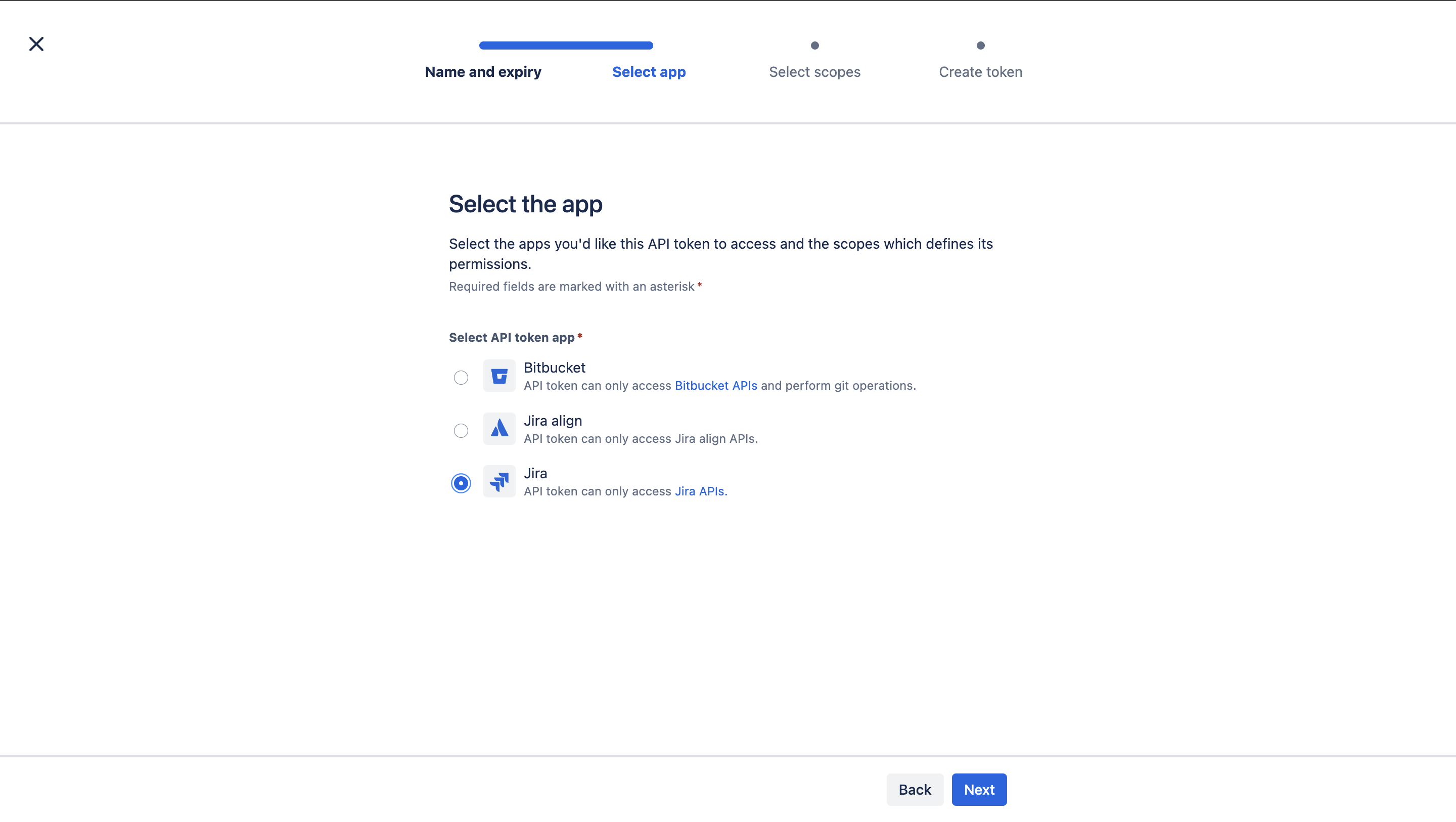
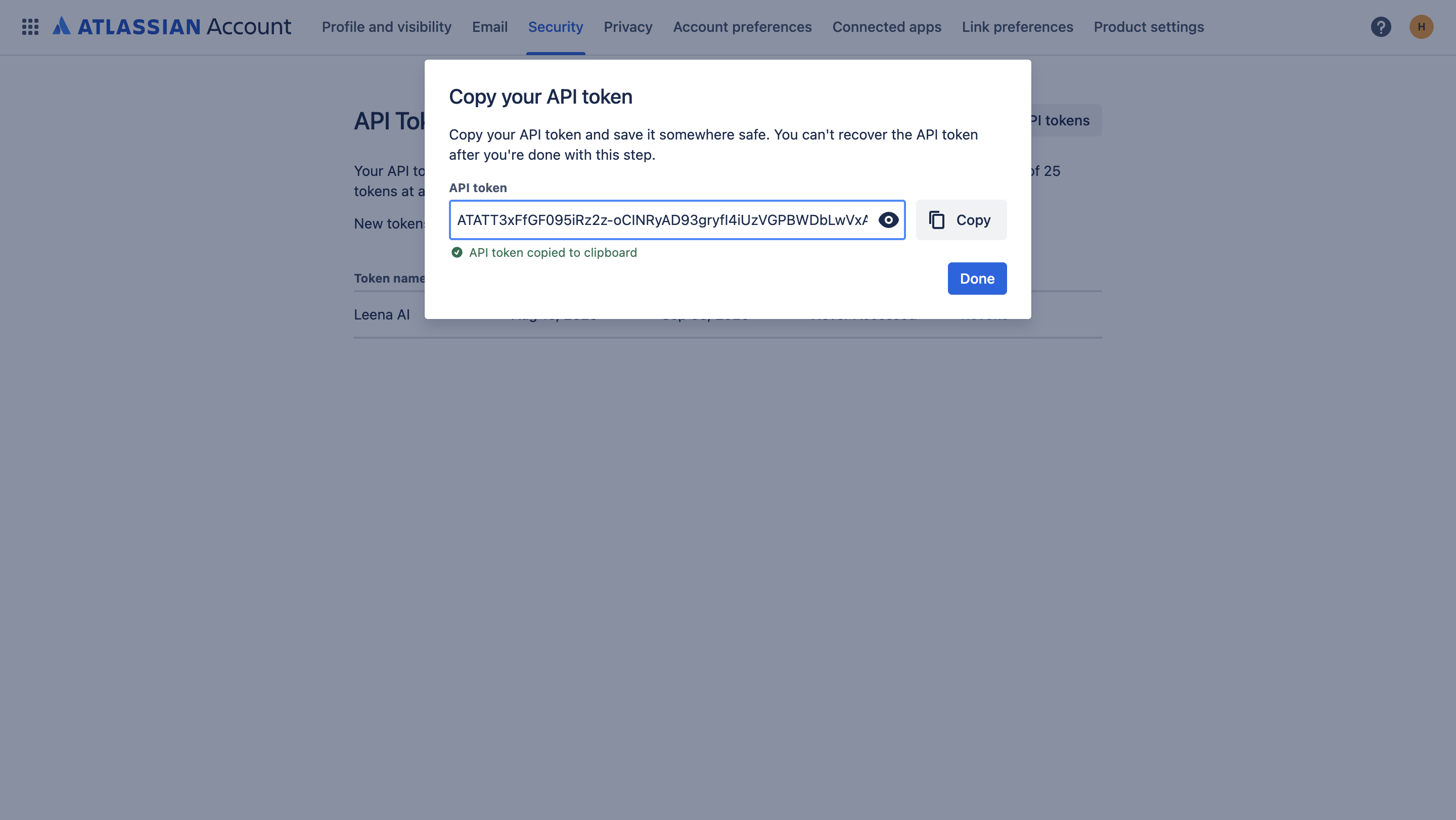
Add connection
Here is how to add a connection on Leena AI:
-
Log in to your Leena AI workspace
-
Navigate to Settings > Integrations
-
Search for "Jira Service Management" and select it from the list to add its new connector
-
Select Basic Authentication type
-
Start configuring the connector
- Base URL: The base URL for your Jira instance (e.g., https://your-domain.atlassian.net). Note: Do not include trailing "/"
- Email: The email address associated with your Atlassian account
- API Token: The API token created in previous steps

-
Save the connector configuration
Actions
The following actions are supported for the Jira Service Management connector:
Create Issue
Creates a new service desk request/issue in Jira Service Management. The Agent can leverage the skill (workflow), which has been designed to create a new service desk request, once the user raises a query to do so. This enables automated ticket creation through conversational interfaces, allowing users to submit service requests directly through the virtual assistant.
Input Parameters
Here are the input parameters required to set up this action:
Mandatory
| Name | Description |
|---|---|
| Service Desk ID | The ID of the service desk where the request will be created |
| Request Type ID | The ID of the request type for this issue |
Optional
| Name | Description |
|---|---|
| Request Fields | The custom fields associated with a service request. Form answers allow you to populate custom fields specific to the request type |

Here is a sample JSON input:
{
"serviceDeskId": "10",
"requestTypeId": "25",
"requestFields": {
"1": {"text": "Answer to a text form field"},
"2": {"date": "2023-07-06"},
"3": {"time": "14:35"},
"4": {"choices": ["5"]},
"5": {"users": ["qm:a713c8ea-1075-4e30-9d96-891a7d181739:5ad6d69abfa3980ce712caae"]}
}
}Response
Upon successful creation, the action returns the created service desk request details including:
- Request ID
- Request key
- Request status
- Created timestamp
Get Customer Requests
Retrieves all requests for the user executing the query, providing comprehensive visibility into service request status and history. This action can be leveraged by Leena AI Orchestrator/Agent to list down all service desk requests for the authenticated user. Here are some common use cases:
- Personal Dashboard: View all your submitted requests
- Request Tracking: Monitor status of multiple requests
- History Review: Access past service requests
- Team Overview: Managers can review team requests
Input Parameters
Here are the input parameters required to set up this action:
Mandatory
None
Optional
| Name | Description |
|---|---|
| Service Desk ID | Filter by service desk ID, within which the issue is raised |
| Request Ownership | The primary owner ID of a particular request |
| Start | Starting index for pagination (default: 0) |
| Limit | Maximum number of results (default: 50) |
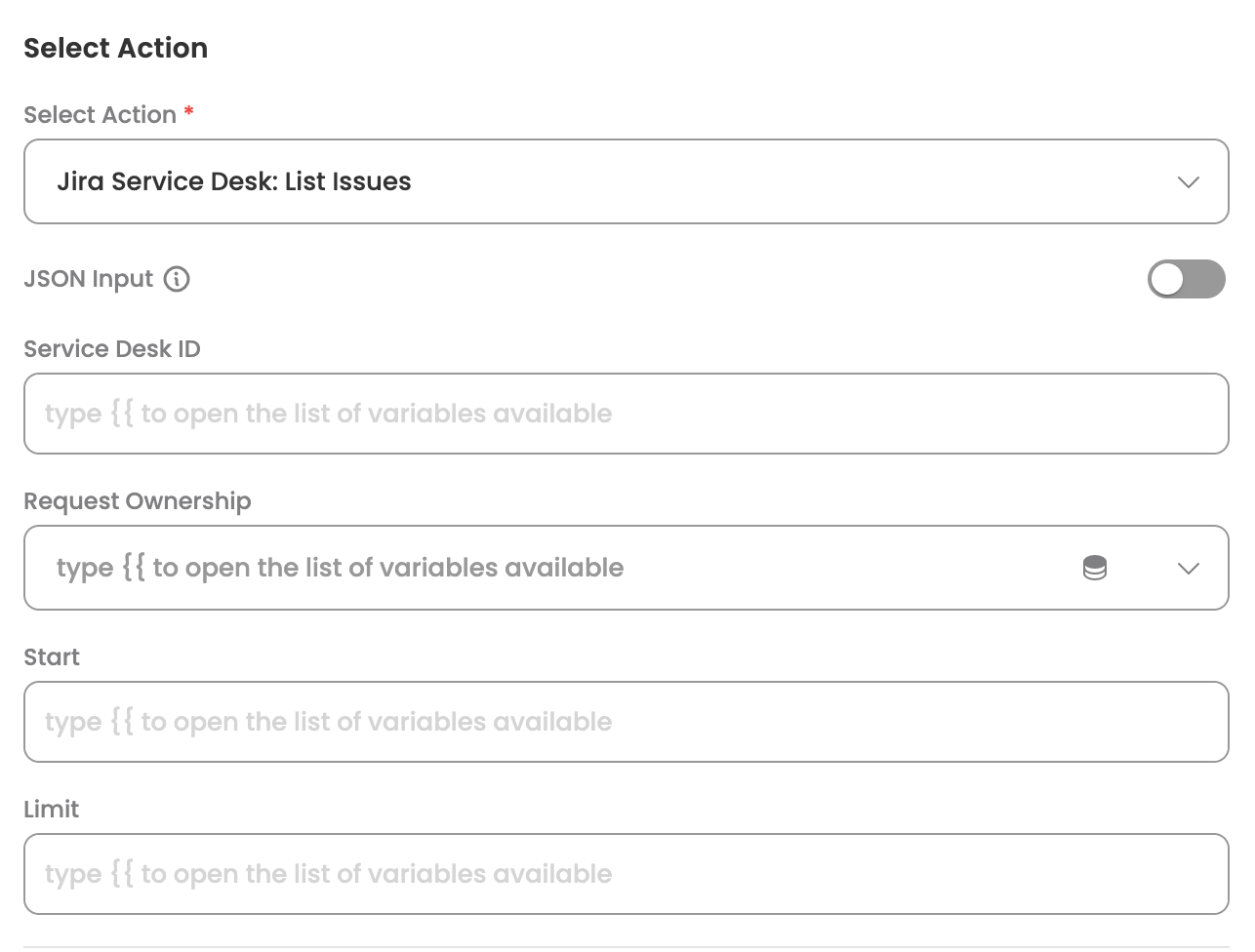
Here is a sample JSON input:
{
"serviceDeskId": "10",
"start": 0,
"limit": 50
}Response
The action returns a list of service desk requests, each containing:
- Request ID and key
- Request type information
- Current status
- Created and updated timestamps
- Owner information
- Summary and description
Get Customer Request by ID/Key
Retrieves comprehensive detailed information about a specific service desk request, including all associated metadata, comments, and attachments. The Agent can leverage the skill (workflow), which has been designed to fetch detailed information about a specific service request. Here are some common use cases:
- Status Updates: Check detailed status of a specific request
- Request History: View complete interaction history
- Context Review: Access all request details for troubleshooting
- Audit Trail: Review request lifecycle for compliance
Input Parameters
Here are the input parameters required to set up this action:
Mandatory
| Name | Description |
|---|---|
| Issue ID or Key | The exact ID or key of the issue which needs to be searched for |
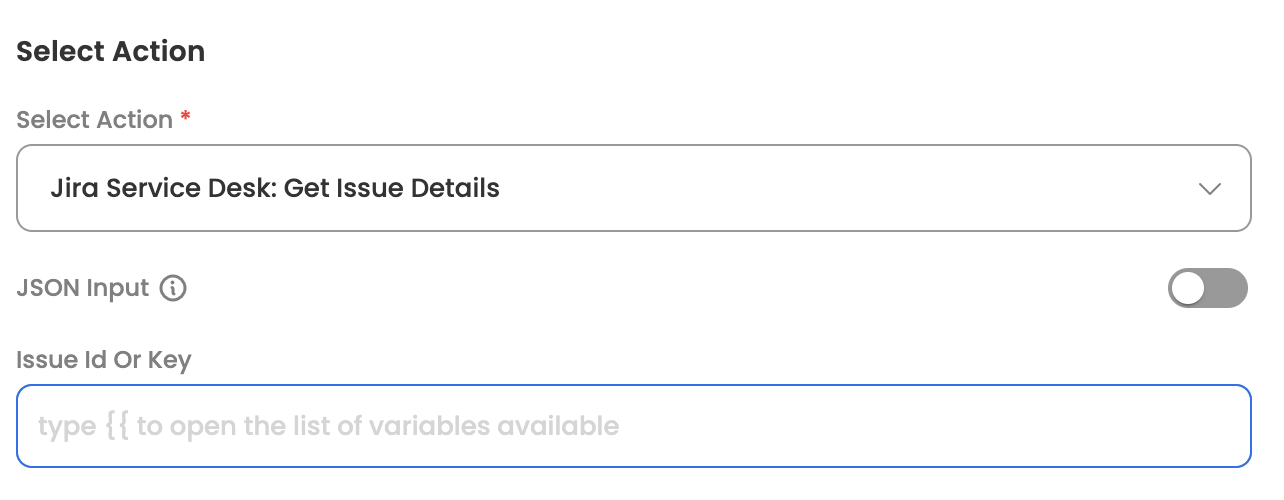
Here is a sample JSON input:
{
"issueIdOrKey": "DEMO-4"
}Response
Upon successful retrieval, the action returns detailed information including:
- Complete request details
- All comments and interactions
- Attachment information
- Status history
- Assigned agent details
- Custom field values
- Timeline of all changes
Perform Request Transition
Transitions a service desk request through workflow states while allowing the addition of contextual comments. The Agent can leverage the skill (workflow), which has been designed to move requests through predefined workflow states (e.g., from "Open" to "In Progress" to "Resolved"). Here are some common use cases:
- Workflow Automation: Automatically progress requests through states
- Status Updates: Change request status based on actions
- Escalation: Move requests to management queues
- Resolution: Close resolved requests after confirmation
- Approval Workflows: Implement approval processes
Input Parameters
Here are the input parameters required to set up this action:
Mandatory
| Name | Description |
|---|---|
| Issue ID or Key | The unique identifier of the issue |
| Transition ID | The status/state to which the issue needs to be transitioned to |
Optional
| Name | Description |
|---|---|
| Additional Comments | Comments to add during transition |
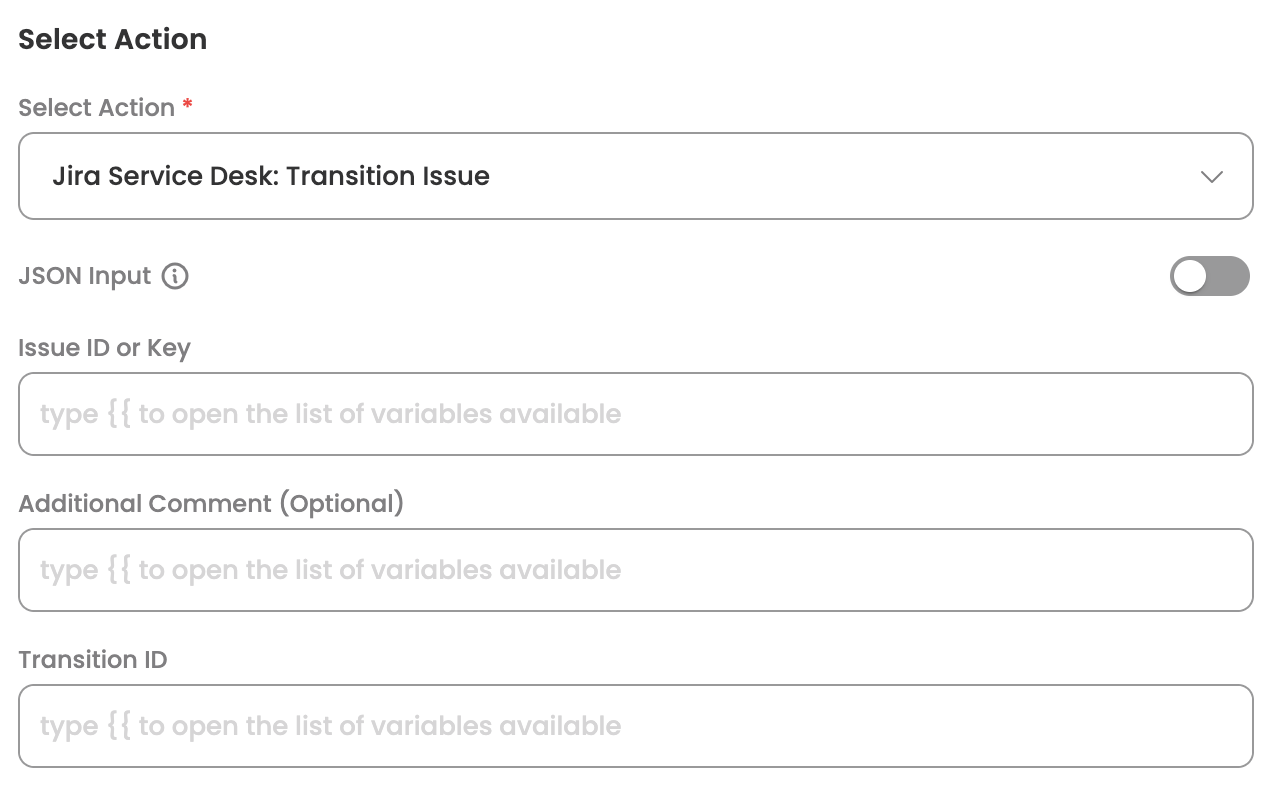
Here is a sample JSON input:
{
"issueIdOrKey": "DEMO-5",
"transitionId": "10012",
"additionalComments": "Moving to In Progress as investigation has begun"
}Response
Upon successful transition, the action returns:
- Updated request status
- Transition timestamp
- Confirmation of comment addition (if provided)
- Current workflow state
Create Attachment
Uploads files to a service desk request, enabling users to attach supporting documents, screenshots, logs, or other relevant files to their service requests.
Input Parameters
Mandatory
| Name | Description |
|---|---|
| Issue ID or Key | The unique identifier of the issue to attach files to |
| File | The file to be uploaded |
Response
Upon successful upload, the action returns:
- Attachment ID
- File name
- File size
- Upload timestamp
- Attachment URL
Get Request Types
Lists all request types configured for a service desk, helping users understand available service categories and enabling intelligent request routing.
Input Parameters
Mandatory
| Name | Description |
|---|---|
| Service Desk ID | The ID of the service desk to retrieve request types from |
Response
The action returns a list of request types including:
- Request Type ID
- Request Type name
- Description
- Icon information
- Field configuration details
Get Service Desks
Retrieves all available service desk projects, providing visibility into organizational service desk structure.
Input Parameters
Mandatory
None
Response
The action returns a list of service desks including:
- Service Desk ID
- Service Desk name
- Project key
- Project type information
Get Transitions
Gets available workflow transitions for a specific request, showing what status changes are possible from the current state.
Input Parameters
Mandatory
| Name | Description |
|---|---|
| Issue ID or Key | The unique identifier of the issue |
Response
The action returns available transitions including:
- Transition ID
- Transition name
- Target status
- Required fields for transition
Updated about 20 hours ago
